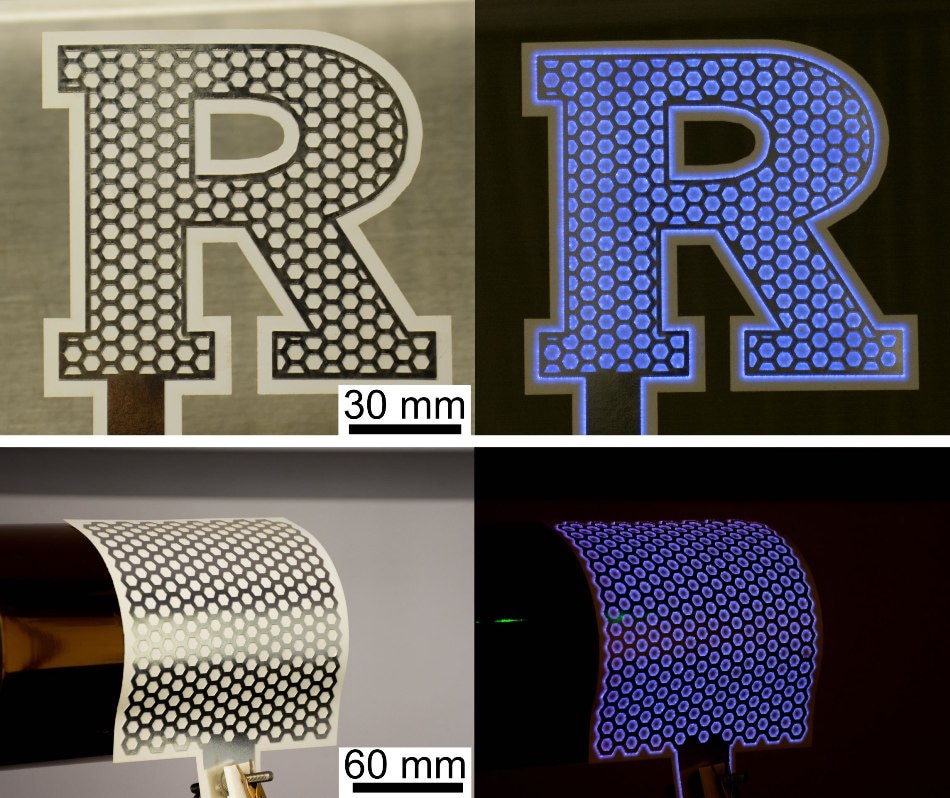May 2 2017
 Paper-based plasma generators can sanitize surfaces with 10 seconds of treatment (Credit: Jingjin Xie)
Paper-based plasma generators can sanitize surfaces with 10 seconds of treatment (Credit: Jingjin Xie)
Imagine wearing clothes that have layers of paper to shield you from dangerous microbes. Now, a research team, headed by Rutgers University, has developed an effective and low-cost method to destroy bacteria and disinfect surfaces with paper-based devices.
Paper is an ancient material, but it has unique attributes for new, high-tech applications. We found that by applying high voltage to stacked sheets of metallized paper, we were able to generate plasma, which is a combination of heat, ultraviolet radiation and ozone that kill microbes.
Aaron Mazzeo, Assistant Professor, Department of Mechanical and Aerospace Engineering, Rutgers
The team has described their study in a article published online in the Proceedings of the National Academy of Sciences. In addition, a video describing the work is available on YouTube.
According to the study, paper-based sanitizers may prove suitable for self-sterilizing clothing, smart bandages that heal wounds, devices that sanitize lab equipment, etc. in the near future. The aim of this work was to develop personal protective equipment that may control the spread of infectious diseases, such as the devastating outbreak of Ebola that occurred in West Africa in 2014.
The researchers’ invention includes paper with thin layers of hexagon/honeycomb and aluminum patterns that function as electrodes to create the ionized gas, or plasma. Due to the porous and fibrous nature of the paper, the gas permeates the paper, fuels the plasma, and facilitates cooling.
To our knowledge, we’re the first to use paper as a base to generate plasma.
Jingjin Xie, Doctoral Candidate, Department of Mechanical and Aerospace Engineering, Rutgers
In experiments, the unique paper-based sanitizers were able to destroy more than 99.9% of E. coli bacteria cells and more than 99% of Saccharomyces cerevisiae (a yeast species). While most E. coli bacteria are not dangerous and are a vital part of a healthy human intestinal tract, there are some types of E. coli that can cause several illnesses such as urinary tract infections, pneumonia, and diarrhea, as per the U.S. Centers for Disease Control and Prevention.
“Preliminary results showed that our sanitizers can kill spores from bacteria, which are hard to kill using conventional sterilization methods,” said Qiang (Richard) Chen, study coauthor and a doctoral candidate in the Department of Plant Biology in Rutgers’ School of Environmental and Biological Sciences.
Our next phase is to vigorously test how effective our sanitizer system is in killing spores.
James F. White Jr., Professor of Plant Pathology, Department of Plant Biology, Rutgers
According to, the main objective of the ongoing study is to develop sensors that resemble how animal and human skin protects from external bacteria and microbes and at the same time detect input such as touch, moisture, temperature, and force from environmental surroundings. Such type of sensors may be able to cover parts of vehicles, buildings, or prosthetics. In addition, devices, vehicles, or robots could be sterilized before they enter into environments that are prone to contamination, and when they come out, can be prevented from contaminating people and environments.
Professor Mazzeo has received a 2017 NSF CAREER Award, which will enable his researchers to carry on their work with papertronic sensors. The team will explore both the design and fabrication of paper-based sensors meant for wearable devices, which will be able to measure sweat and brain waves to determine the stress and alertness in humans. The future work should result in electronic devices that would close the gap between humans and machines, while producing innovative processing methods for renewable paper products.
Other study authors include Poornima Suresh, an electrical and computer engineering major and undergraduate researcher in the Department of Mechanical and Aerospace Engineering, together with Subrata Roy, a professor in the Department of Mechanical and Aerospace Engineering at the University of Florida in Gainesville, Florida.